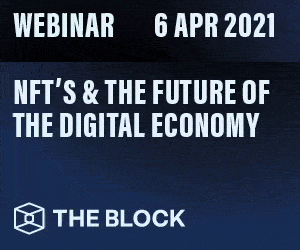Iron Finance Denies Rug Pull After Token Collapse
Key Takeaways
- Iron Finance’s TITAN, which backs the algorithmic stablecoin IRON, collapsed after a massive selloff last night.
- The price crash likely occurred because of IRON’s pegging mechanism depending on arbitrage.
- The team has denied allegations of a rug pull, and will let IRON holders redeem the stablecoin for USDC.
Iron Finance’s governance token completely collapsed last night. According to the team, the project’s TITAN token suffered from a bank run after users were urged to remove liquidity from all pools.
Iron Finance Under Fire
Iron Finance, a DeFi project that issues a partially collateralized algorithmic stablecoin called IRON, has suffered a major incident.
TITAN, the governance token that backed IRON, collapsed last night due to a massive selloff. The token price crashed from around $60 to $0.00000006, as per data from CoinGecko. Meanwhile, the IRON stablecoin is trading at around $0.70 (stablecoins like IRON are meant to stay pegged to an asset—in this case, that’s the dollar).
The stablecoin was backed by USDC and TITAN in portions of 75% and 25%. Iron Finance launched on Polygon less than a month ago and quickly attracted over $2 billion in liquidity.
It is still not clear what was the reason behind a near-zero price collapse. Many have speculated that the crash could have been due to a “rug pull,” a situation where project founders make off with the users’ funds locked in smart contracts. However, the team denied these claims. On its website, it wrote:
“There is no hacks, no exploits or rug-pullings.”
To incentivize USDC staking in its liquidity pools, the project had offered yields up to 10,000% APY in TITAN tokens. The yield caught the attention of Shark Tank entrepreneur-turned-DeFi enthusiast Mark Cuban, who revealed that he was farming TITAN in a blog post earlier this week. Cuban tweeted that he “got hit like everyone else” last night.
The Likely Cause
TITAN may have crashed due to the stablecoin pegging mechanism. When the price started declining, IRON lost its dollar peg. Like other algorithmic stablecoins, the price should have restored once the pegging mechanisms come into play. But, the situation spiraled out of control.
According to the protocol’s pegging system, whenever the price of the IRON token is less than one U.S. Dollar (USD), anyone can buy the token and redeem it for $1 worth of value, divided into $0.75 of USDC and $0.25 of TITAN.
While this arbitrage mechanism was meant to be the peg for IRON, it was likely the cause of the crash. Yesterday, when the stablecoin was trading under a dollar, arbitrageurs bought and redeemed IRON at a cheaper price. The TITAN tokens were continuously sold on the open market, causing the price collapse.
Furthermore, as people tried to redeem more IRON, panic spread, and this lead to a bank run, meaning everyone tried to redeem their IRON tokens at the same time. The sell pressure continued until TITAN’s price fell to almost zero.
This issue was pointed out by Millenial Finance’s lead developer, z80Ðev, a few days ago. They wrote:
Iron Finance said that it would publish a post-mortem after it has a better understanding of what caused the sudden collapse. Regardless of TITAN going to zero, Iron Finance’s vaults still contain more than $200 million worth of USDC. The team has promised it would allow IRON holders to redeem $0.748 worth of USDC per token from this evening.
The information on or accessed through this website is obtained from independent sources we believe to be accurate and reliable, but Decentral Media, Inc. makes no representation or warranty as to the timeliness, completeness, or accuracy of any information on or accessed through this website. Decentral Media, Inc. is not an investment advisor. We do not give personalized investment advice or other financial advice. The information on this website is subject to change without notice. Some or all of the information on this website may become outdated, or it may be or become incomplete or inaccurate. We may, but are not obligated to, update any outdated, incomplete, or inaccurate information.
You should never make an investment decision on an ICO, IEO, or other investment based on the information on this website, and you should never interpret or otherwise rely on any of the information on this website as investment advice. We strongly recommend that you consult a licensed investment advisor or other qualified financial professional if you are seeking investment advice on an ICO, IEO, or other investment. We do not accept compensation in any form for analyzing or reporting on any ICO, IEO, cryptocurrency, currency, tokenized sales, securities, or commodities.
See full terms and conditions.
Source: Read Full Article





